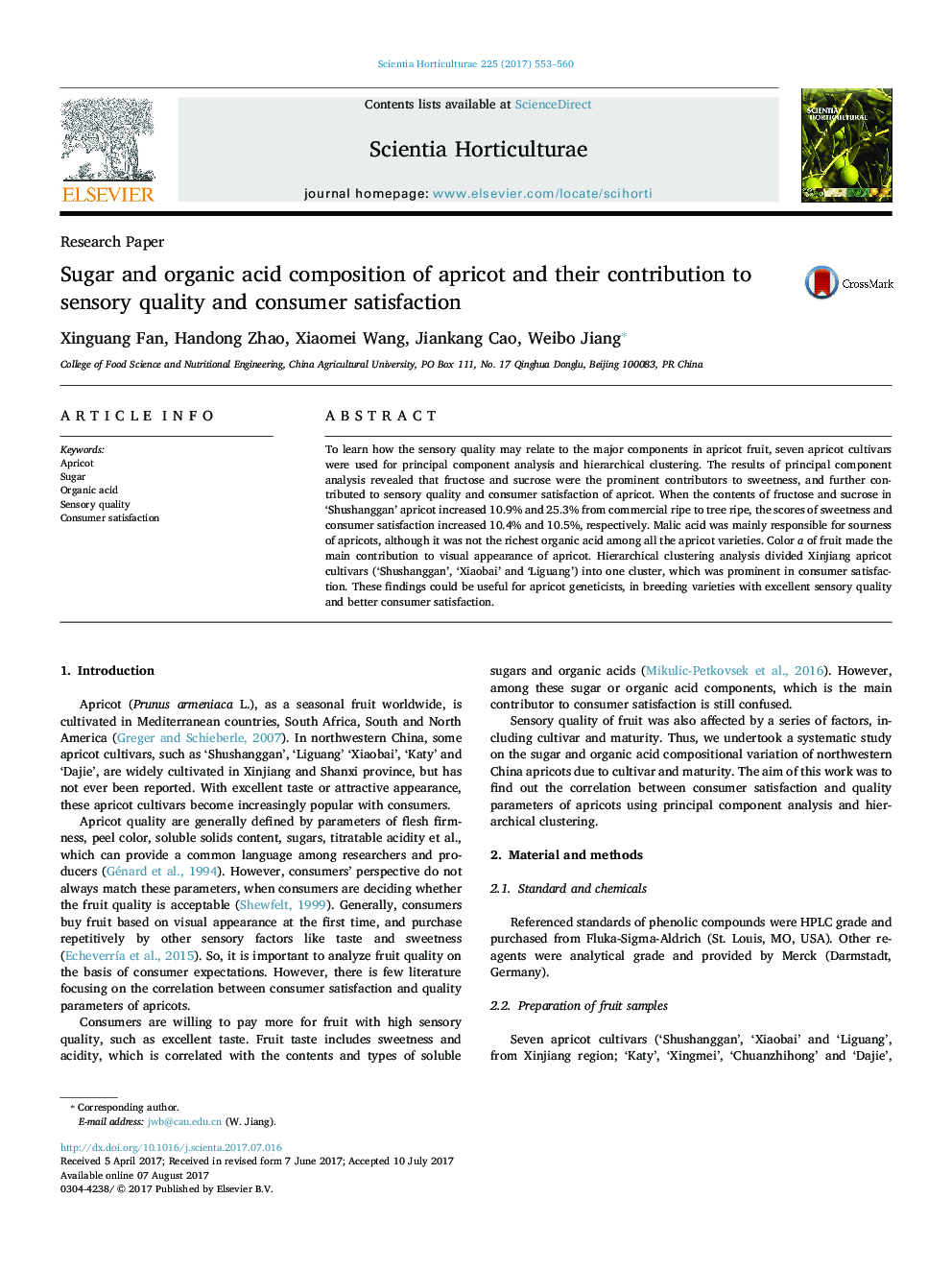| کد مقاله | کد نشریه | سال انتشار | مقاله انگلیسی | نسخه تمام متن |
|---|---|---|---|---|
| 5769302 | 1628773 | 2017 | 8 صفحه PDF | دانلود رایگان |

- Sucrose is the main contributor to sweetness and consumer satisfaction of apricot.
- Malic acid is highly responsible for sourness of apricot.
- Color a of fruit make the main contribution to visual appearance.
- Xinjiang apricot cultivars are prominent in sucrose and consumer satisfaction.
- Xinjiang apricots can be used in breeding varieties with better consumer satisfaction.
To learn how the sensory quality may relate to the major components in apricot fruit, seven apricot cultivars were used for principal component analysis and hierarchical clustering. The results of principal component analysis revealed that fructose and sucrose were the prominent contributors to sweetness, and further contributed to sensory quality and consumer satisfaction of apricot. When the contents of fructose and sucrose in 'Shushanggan' apricot increased 10.9% and 25.3% from commercial ripe to tree ripe, the scores of sweetness and consumer satisfaction increased 10.4% and 10.5%, respectively. Malic acid was mainly responsible for sourness of apricots, although it was not the richest organic acid among all the apricot varieties. Color a of fruit made the main contribution to visual appearance of apricot. Hierarchical clustering analysis divided Xinjiang apricot cultivars ('Shushanggan', 'Xiaobai' and 'Liguang') into one cluster, which was prominent in consumer satisfaction. These findings could be useful for apricot geneticists, in breeding varieties with excellent sensory quality and better consumer satisfaction.
144
Journal: Scientia Horticulturae - Volume 225, 18 November 2017, Pages 553-560